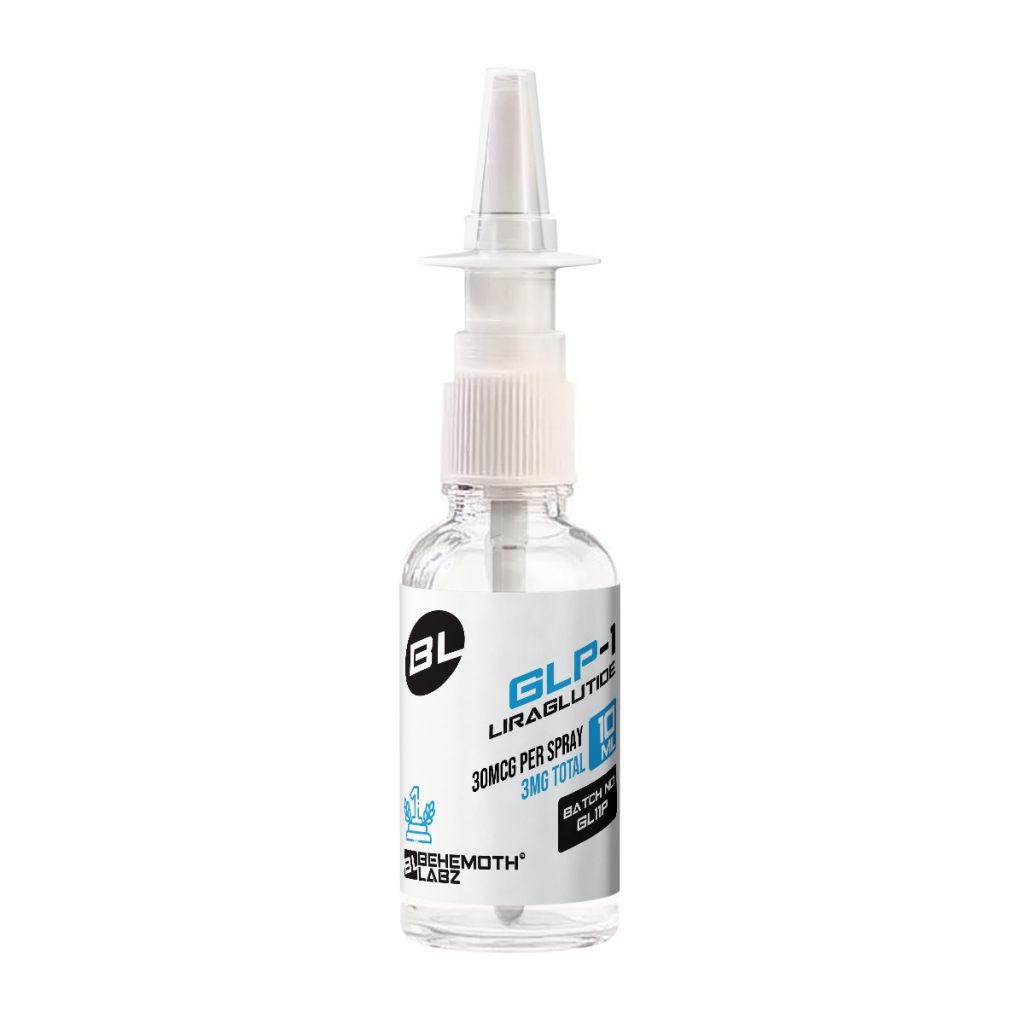Introduction

Have you ever considered whether there might be a revolutionary method for managing diabetes that claims to help you lose weight in addition to controlling your blood sugar levels?
What if, however, there existed a substance that could address both blood sugar problems and weight problems?
One possible diabetes medication is GLP-1 Liraglutide. It’s not your usual treatment; rather, it addresses the common problems that people with type 2 diabetes encounter regularly. GLP-1 Liraglutide exhibits this intriguing potential. Let’s review it further.
Product Information
GLP-1 Liraglutide stands as a paradigm-shifting medication, presenting a significant advancement in the landscape of diabetes management. Its genesis can be traced back to a pivotal discovery in diabetes research, culminating in a revolutionary breakthrough that redefined treatment strategies. [R]
The inception of GLP-1 Liraglutide is rooted in the identification of glucagon-like peptide-1 (GLP-1), an endogenous hormone pivotal in glycemic control. This pivotal discovery spurred researchers to explore innovative avenues in diabetes therapeutics, leading to the subsequent development of GLP-1 Liraglutide.
The pivotal moment arrived when researchers recognized the potential of harnessing GLP-1 not only for glucose regulation but also for addressing the conundrum of weight gain associated with conventional diabetes interventions. This realization paved the way for the synthesis of GLP-1 Liraglutide, a pharmacological iteration of GLP-1 with broader therapeutic implications. [R]
Distinguishing itself with a dual modality, GLP-1 Liraglutide emulates the physiological actions of GLP-1. Its insulinotropic effect augments insulin release, optimizing glycemic homeostasis. Simultaneously, it modulates gastric motility, inducing a satiety response and fostering weight loss – a distinctive characteristic that sets it apart from conventional antidiabetic agents.
GLP-1 Liraglutide in the form of Nasal Spray stands as an innovative and comfortable alternative in diabetes management, transcending conventional methods to provide a hassle-free experience. This non-invasive approach eliminates the need for needles, ensuring a painless experience that is especially beneficial for individuals with reservations or anxieties related to injections.
The ease of use associated with nasal sprays contributes to improved adherence to prescribed medication regimens, fostering better long-term outcomes in diabetes management.
With its swift and convenient application, users can seamlessly integrate GLP-1 Liraglutide Nasal Spray into their daily routines, avoiding the complexities of traditional injections and reducing potential barriers to consistent use.
How Does It Work?
GLP-1 Liraglutide operates as a sophisticated agent in the realm of diabetes management, employing a comprehensive mechanism of action that extends beyond conventional glucose regulation. This medication in form of nasal spray, born from pioneering research, intricately interacts with various physiological systems to provide a nuanced approach to diabetes care. [R] [R] [R]
Engagement of GLP-1 Receptor
The mechanism of action of GLP-1 Liraglutide involves binding to and activating the glucagon-like peptide-1 (GLP-1) receptors in several different tissues, including the gastrointestinal tract and the pancreas.
Increased Production of Insulin
GLP-1 Liraglutide promotes the release of insulin in a glucose-dependent manner after binding to GLP-1 receptors on pancreatic beta cells. This implies that insulin helps to regulate the amount of glucose in the bloodstream by being released when blood sugar levels are raised.
inhibition of the release of glucagon
GLP-1 Liraglutide concurrently prevents the hormone glucagon, which elevates blood sugar levels, from being released. Through glucagon suppression, the drug aids in preventing the liver from producing too much glucose.
You might be interested in our other articles.
Delayed Gastric Emptying
GLP-1 Liraglutide also influences the gastrointestinal system. It slows down the emptying of the stomach, leading to a prolonged sense of fullness after meals. This effect contributes to reduced food intake and supports weight loss efforts.
Central Nervous System Interaction
GLP-1 receptors are not only present in the pancreas but also in the central nervous system. GLP-1 Liraglutide may have direct or indirect effects on the brain, influencing appetite control and promoting a feeling of satiety.
Beta Cell Protection and Function
Studies suggest that GLP-1 Liraglutide may have protective effects on beta cells in the pancreas, helping to maintain their function over time. This is particularly beneficial in the context of type 2 diabetes, where beta cell dysfunction is a key factor.
Metabolic Rate Modulation
GLP-1 Liraglutide may impact energy expenditure and metabolic rate, potentially contributing to weight loss. The medication’s influence on metabolism goes beyond its immediate effects on glucose regulation.
Benefits of GLP 1 Liraglutide

GLP-1 Liraglutide, a formidable player in diabetes management, offers a range of potential benefits that extend beyond conventional glucose control. Rooted in innovative research, this medication showcases a multifaceted approach, addressing not only blood sugar levels but also weight management and potential complications associated with type 2 diabetes.
Improved Blood Sugar Control
GLP-1 Liraglutide takes the lead in optimizing blood sugar levels. The LEADER trial, a landmark study, showcased the medication’s prowess in achieving and maintaining glycemic control. By significantly reducing HbA1c levels, GLP-1 Liraglutide proves instrumental in managing blood glucose effectively. [R]
Weight Loss
GLP-1 Liraglutide isn’t just about sugar control – it’s a heavyweight in supporting weight loss too. The SCALE and SUSTAIN trials consistently demonstrated substantial weight reduction in individuals using GLP-1 Liraglutide. This dual-action benefit contributes to a holistic approach to diabetes management. [R]
Cardiovascular Benefits
GLP-1 Liraglutide doesn’t just stop at blood sugar – it has your heart’s back too. The LEADER trial demonstrated a reduction in major adverse cardiovascular events, providing cardiovascular protection for individuals with type 2 diabetes. Beyond sugar control, this cardiovascular benefit adds an extra layer of confidence in its therapeutic profile. [R]
Pancreatic Beta Cell Preservation
A standout feature is GLP-1 Liraglutide’s potential to protect pancreatic beta cells. Research suggests that it may preserve these cells over time, maintaining insulin production and mitigating the deterioration often seen in type 2 diabetes. [R]
Appetite Regulation
GLP-1 agonists influence appetite regulation by acting on the central nervous system. This leads to a feeling of fullness and can assist individuals in managing their food intake, contributing to weight loss.
Blood Pressure Regulation
Some GLP-1 agonists have shown positive effects on blood pressure regulation. This can be crucial for individuals with diabetes, as hypertension is a common comorbidity. The cardiovascular benefits extend to maintaining optimal blood pressure levels. [R]
Anti-Inflammatory Properties
Emerging evidence suggests GLP-1 Liraglutide may have anti-inflammatory properties. This potential benefit is particularly promising in addressing the chronic inflammation associated with diabetes and its complications. [R]
Side Effects

GLP-1 Liraglutide is generally well tolerated, however it, like any medicine, can cause side effects. It’s important to note that not everyone will experience symptoms, and the severity can vary. If you are taking GLP-1 Liraglutide, it is critical that you discuss any concerns or potential side effects with your doctor. Common side effects include:
Nasal Irritation
A sensation of discomfort or irritation in the nasal passages, which may manifest as itching, burning, or a feeling of dryness. This is common in nasal spray use but is generally mild and temporary.
Gastrointestinal Disturbances
GLP-1 Liraglutide side effects are among the most common. These can include nausea, vomiting, diarrhea, and abdominal pain.
Loss of Appetite
Some individuals may experience a decrease in appetite, leading to reduced food intake.
Headache
Headaches are a reported side effect in some individuals using GLP-1 Liraglutide.
Fatigue
Fatigue or a sense of tiredness may occur, particularly in the early stages of treatment.
Hypoglycemia
While GLP-1 Liraglutide is not known to cause hypoglycemia on its own, especially when used as a monotherapy, it may increase the risk when combined with other diabetes medications like insulin or sulfonylureas.
Is GLP 1 Liraglutide Legal?
Yes, GLP-1 Liraglutide, commonly known by the brand name Saxenda, is a legally approved medication. It has received regulatory approval from health authorities, including the U.S. Food and Drug Administration (FDA) and other regulatory agencies worldwide. [R]
The FDA has approved for the use of GLP-1 Liraglutide for specific indications, such as the treatment of type 2 diabetes and, as mentioned in a previous example, for chronic weight management in certain populations. Regulatory approval involves a thorough assessment of the medication’s safety, efficacy, and quality based on clinical trials and scientific evidence.
Suggested Dose

The dosing and administration instructions for drugs administered as nasal sprays can vary depending on the formulation and the ailment being treated. It is critical to follow the recommendations supplied by your healthcare practitioner or the medication’s package if you have a nasal spray with a GLP-1 Liraglutide content of 30 mcg per spray (3 mg/10 ml).
In general, nasal spray administration consists of the following steps:
Prepare: Thoroughly wash your hands. If advised, carefully shake the nasal spray container.
Clear Your Nasal Passages: If necessary, softly blow your nose. Check that your nasal passageways are clear.
Raise Your Head: Tilt your head forward slightly to prevent the spray from dribbling down your throat.
How to Use the Spray: Insert the nasal spray tip into one nostril. With your finger, close the other nostril. To release the drug, press down on the spray device. While spraying, gently inhale through your nose.
Repeat for the opposite nostril: If more than one spray is required, repeat the procedure in the opposite nostril.
Where Can You Buy the Best GLP 1 Liraglutide Nasal Spray Online?
Enhance your research experience by using BehemothLabz, the reliable supplier of the best nasal spray for GLP-1 liraglutide. To ensure unrivaled quality and dependability, every product is put through extensive testing in both their first-party tests and credible third-party labs. BehemothLabz promises to provide outstanding customer service. They work hard to develop our business operations and procedures with an emphasis on continuous improvement so that they can supply you with state-of-the-art research materials. They also maintain the greatest ethical standards in our marketing methods, so you can put your trust in their honesty and integrity. Select BehemothLabz for an exceptional research experience—your doorway to unmatched quality and support.

Conclusion
To summarize the highlight of GLP-1 Liraglutide review 2024 dosage usage and benefits, this nasal spray, a notable member of the glucagon-like peptide-1 (GLP-1) receptor agonists, has emerged as a pivotal player in the management of diabetes mellitus. Its efficacy has been extensively examined through randomized clinical trials, including cardiovascular outcome trials, shedding light on its impact on cardiovascular disease risk. This scrutiny, coupled with systematic reviews, reinforces its multifaceted benefits, encompassing not only blood glucose level control but also potential advantages in cardiovascular outcomes.
For individuals newly introduced to diabetes management, the prospect of nasal spray administration can be less intimidating compared to traditional injections. This may facilitate a smoother transition into incorporating the medication into their healthcare routine.
Considering personal or family history and cautious monitoring for adverse events, particularly in relation to medullary thyroid cancer, remains crucial in the decision-making process. Furthermore, its role in basal insulin combination treatment signifies its versatility in tailoring diabetes management strategies.
As researchers delve into the intricate landscape of GLP-1 receptor agonists, ongoing exploration of their effects on kidney disease adds to the comprehensive understanding of their potential impact on various aspects of health. In navigating the intricate realm of diabetes therapeutics, GLP-1 Liraglutide stands as a promising avenue, offering a holistic approach to patient care with a keen focus on cardiovascular health and beyond.

